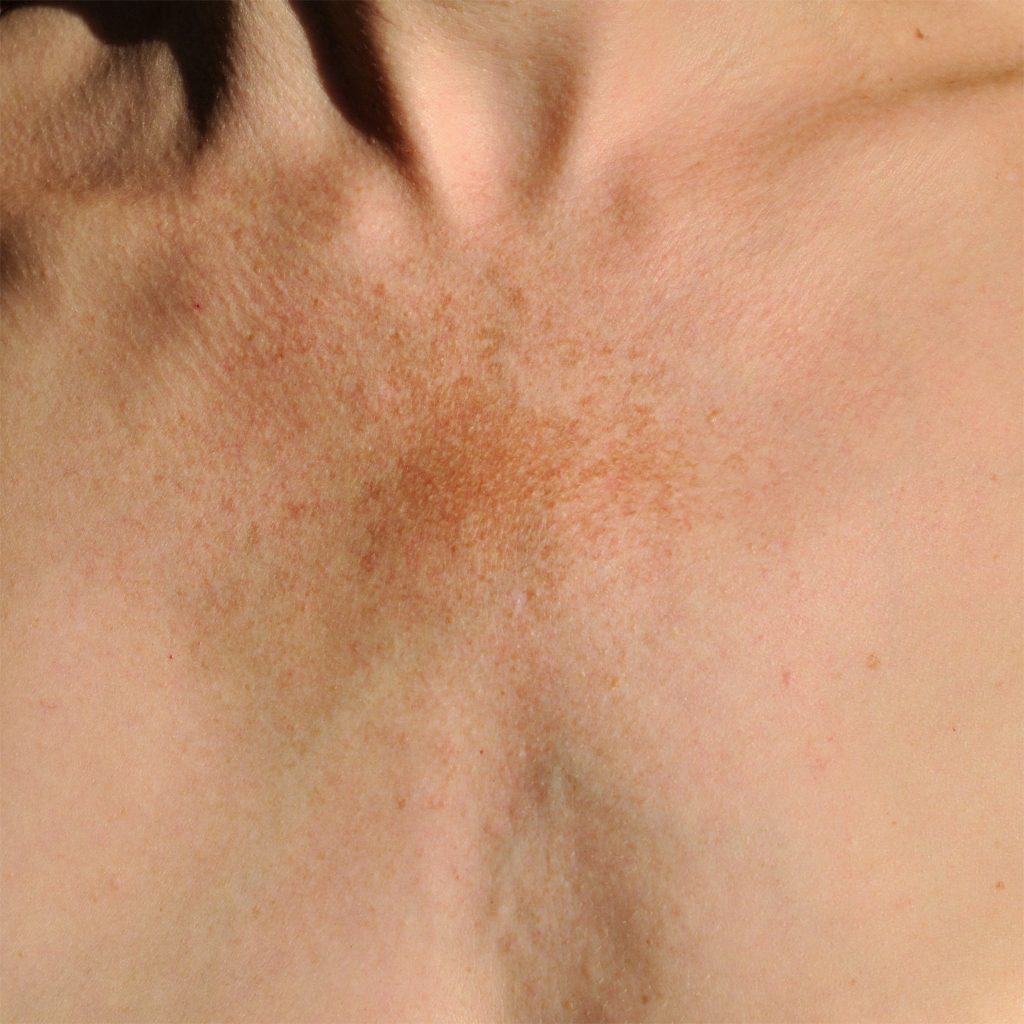STAINS
WHAT ARE SKIN SPOTS?
Human skin is prone to rashes and spots of all kinds. Most of the time, they are harmless, but it’s important to understand them and their symptoms so you know what to do.
We must understand that not all spots are “blemishes.” It’s important to have a dermatologist evaluate the type of lesion we have and assess the best method for removing it.
Dark spots on the skin are called hyperpigmentation. Hyperpigmentation occurs when the body produces excess melanin, producing the spots.
This causes flat, darker patches of skin that develop, ranging from light brown to black, and can vary in size and shape.
MOST COMMON SKIN SPOTS
There are different forms of skin spots, depending on their causes. The most common are:
- Pigmentation spots (such as lentigines): These are small, darkened patches primarily caused by sun exposure, which is why they appear in particularly exposed areas: the face, hands, and arms.
- Melasma or chloasma: These appear as dark, uneven areas on the face and sometimes in other areas such as the arms. It affects 90% of pregnant women as a result of hormonal influences and birth control pills.
- Post-inflammatory hyperpigmentation: This appears after a skin lesion has healed, leaving a flat spot. It is common in people with acne and those with darker skin types.
SYMPTOMS OF SKIN SPOTS
The main symptoms of skin spots are any noticeable change in the color or size of a particular area of the skin. It’s painless, and, as previously mentioned, there can be multiple causes. They’re usually harmless, but a dermatologist should thoroughly investigate them.
WHAT CAUSES SKIN SPOTS?
Skin hyperpigmentation can occur through two mechanisms:
Excess production of melanin (the pigment that gives natural color to skin, hair, and eyes) by existing melanocytes, called melanic hyperpigmentation.
An increased proliferation of active melanocytes, called melanocytic hyperpigmentation.
Skin spots appear in the form of plaques and can be related to various factors, although the most common causes are sun exposure, genetic factors, age, hormonal problems, and skin injuries or infections.
WHAT CAN I DO?
There are certain factors that can be modified and others that cannot, such as phototype. Thus, to prevent certain dark spots, it is recommended to avoid excessive sun exposure, do so gradually, use a high sun protection factor, and wear hats or caps.
It is also important to consult with your dermatologist about the possible hormonal influences of certain medications.

WHAT CAN WE OFFER YOU AT ONE FACE?
The first step is to analyze the type of spot, since what appears harmless at first glance may be another type of skin lesion, analyzed with a dermatoscope by the dermatologist. Treatment will vary depending on the type of spot and the patient’s phototype.
The most commonly used treatments are: application of creams specifically formulated for each patient, oral medications, microneedling with depigmenting active ingredients, chemical peels of varying depths, intense pulsed light treatment, plasmapen, cryotherapy, laser, or surgical excision.
In many cases, it is important to combine treatments and ensure adequate monitoring after spot removal to avoid the post-inflammatory hyperpigmentation that certain procedures can cause.
MAKE AN APPOINTMENT ONLINE
If you are not sure which treatment you need, request a first appointment with our specialists without obligation and we will find the best solution for you.
Appointments can be requested exclusively online in the calendar on the right, follow these steps:
- Click BOOK APPOINTMENT and a link will open in DOCTORALIA
- Select the date and time you want.
- Enter your details into the system.
- You will receive an SMS confirming the date of your visit.
If once the appointment has been confirmed you need to modify it, cancel it or carry out any other procedure, please contact us to find the best solution.
CONTRATAR TRATAMIENTO
- Introduce los datos solicitados durante la compra
- Paga el tratamiento en un solo pago o en cómodos plazos
- Recibirás un email confirmando la compra

Una vez realizada la compra nos pondremos en contacto contigo para fijar fecha y hora para el tratamiento.
